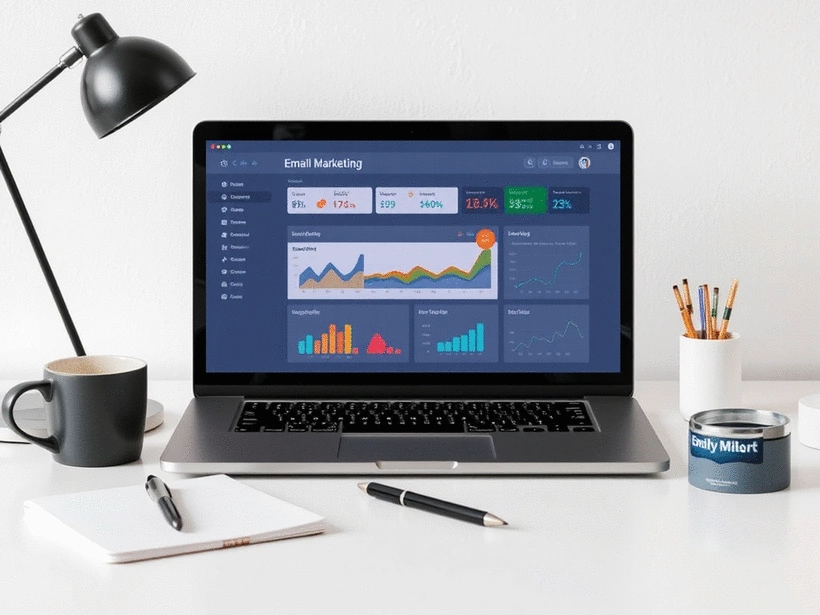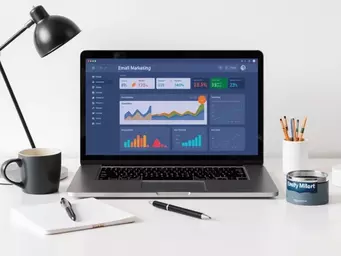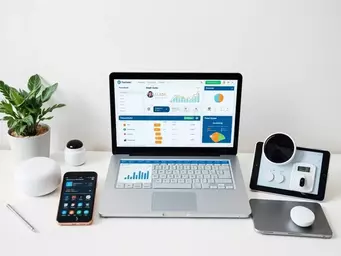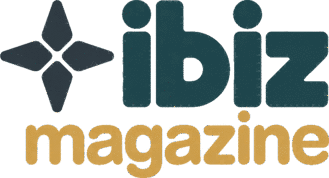Email Marketing Automation Setup Guide

Effective email marketing can transform your business. By leveraging automation, you not only save time but also enhance your engagement with customers. Ready to explore the key insights that will elevate your email campaigns?
What You Will Learn
- Efficiency Boost: Automation enables you to streamline processes and engage with your audience consistently.
- Targeted Campaigns: Triggered emails and personalized content lead to higher conversion rates by resonating with specific audience segments.
- Data-Driven Decisions: Utilize analytics to monitor performance and refine your strategies for improved results.
- Enhancing Customer Journeys: Timely communications foster positive experiences and customer loyalty.
The Core Pillars of Email Marketing Automation
Email marketing automation streamlines campaigns, enhances customer journeys, and boosts engagement. Below are the key benefits and methods.
Benefits of Automation
- ✓ Increased Efficiency
- ✓ Higher Conversion Rates
- ✓ Improved Customer Retention
Key Automation Components
- ● Triggered Emails
- ● Scheduled Campaigns
- ● Personalization
Enhancing Customer Journeys
- ★ Consistent Communication
- ★ Tailored Experiences
- ★ Proactive Engagement
Next Steps: Starting Your Journey
- 1. Define Objectives
- 2. Select Tools
- 3. Create Workflows
- 4. Review Analytics
Understanding Email Marketing Automation and Its Importance
Email marketing automation is a powerful tool that enables businesses to engage with their audience effectively. In simple terms, it involves using software to automate your email campaigns. This means that you can send targeted messages to your subscribers without having to manually craft each email every time. At iBiz Magazine, we believe that understanding email marketing automation is crucial for any entrepreneur looking to scale their business. It’s not just about sending emails; it’s about creating meaningful connections!
By automating your email marketing efforts, you save time and ensure that your messages reach the right people at the right time. But what does this look like in practice? Let’s dive deeper into the various aspects of email marketing automation!
What is Email Marketing Automation?
Email marketing automation is a way to streamline and enhance your marketing efforts. It allows you to send out emails based on specific triggers or timelines, such as a user signing up for your newsletter or abandoning their shopping cart. This means you can nurture leads and keep your audience engaged without constant manual input. Salesforce provides an excellent guide to email automation, highlighting its fundamentals and advanced applications.
- Triggered Emails: Emails sent based on user actions, like welcome or thank-you messages.
- Scheduled Campaigns: Pre-planned emails sent at a specific time.
- Personalization: Tailoring content to individual preferences and behaviors.
Understanding these components helps you use email marketing automation to your advantage. It not only saves you time but also improves customer engagement by sending relevant messages that resonate with your audience.
The Benefits of Implementing Automation for High-Converting Campaigns
Implementing email marketing automation can significantly enhance your marketing strategy. First and foremost, automation allows you to maintain consistent communication with your audience while focusing on other critical business tasks. This means you can spend more time on creative strategies while the automation handles routine engagements. Campaign Monitor offers valuable resources on email automation, detailing how it can lead to higher conversion rates.
- Increased Efficiency: Streamline your processes and save valuable time.
- Higher Conversion Rates: Send targeted campaigns that resonate with specific audience segments.
- Improved Customer Retention: Keep your audience engaged with timely follow-ups and relevant content.
At iBiz Magazine, we’ve seen how automation can transform a business. By automating your email campaigns, you’re not only optimizing your processes but also fostering stronger relationships with your customers.
How Automation Tools Enhance Campaign Management
Automation tools are designed to simplify the complexities of managing email campaigns. They come equipped with features that help you create, schedule, and analyze your email marketing efforts easily. Some popular tools include Mailchimp, ActiveCampaign, and Klaviyo, each offering unique benefits that can enhance your campaign management.
- Analytics and Reporting: Measure the success of your campaigns with in-depth analytics.
- Segmentation: Target specific audience segments for personalized messaging.
- A/B Testing: Test different elements of your emails to find what resonates best.
These tools not only simplify the management process but also provide valuable insights that can help you refine your strategies over time. Embracing these technologies can lead to more effective campaigns and better results.
Quick Summary
Here's a brief recap of the key points discussed so far:
- Email marketing automation allows businesses to send targeted messages without manual input, saving time and enhancing engagement.
- Key components include triggered emails, scheduled campaigns, and personalization, all contributing to a more effective marketing strategy.
- Automation tools simplify campaign management with features like analytics, segmentation, and A/B testing, leading to higher conversion rates and improved customer retention.
Summarizing Key Takeaways for Effective Email Marketing Automation
At iBiz Magazine, we believe that understanding the core principles of email marketing automation is essential for any entrepreneur looking to enhance their customer engagement. Automation not only streamlines your marketing efforts but also significantly improves the customer journey. By leveraging automation, you can ensure that your communications are timely, relevant, and tailored to meet customer needs.
In summary, here are some key takeaways to consider:
- Automation saves time: It allows you to set up campaigns that run independently, freeing you to focus on other business areas.
- Personalization is crucial: By segmenting your audience and personalizing your messages, you're more likely to increase engagement.
- Analytics matter: Continuously monitor your campaigns to understand what works and what doesn’t, refining your strategies accordingly.
The Role of Automation in Enhancing Customer Journeys
Automation plays a pivotal role in shaping positive customer experiences. By sending the right messages at the right time, you guide your customers through their journey with your brand. For instance, a well-timed welcome email can set the tone for a lasting relationship, while a thoughtful follow-up email can encourage repeat purchases.
Here are a few ways automation enhances customer journeys:
- Consistent Communication: Automated emails keep your brand on top of customers' minds without overwhelming them.
- Tailored Experiences: Use data to customize content that resonates with individual preferences and behaviors.
- Proactive Engagement: Reach out to customers based on their actions, like abandoned carts or browsing history, to encourage conversions.
Next Steps: Starting Your Email Marketing Automation Journey
Embarking on your email marketing automation journey can seem daunting, but it doesn’t have to be! I recommend starting with a clear plan. Begin by defining your goals and identifying the right tools that align with your unique business needs. Finalsite provides valuable email automation best practices that can guide your initial setup.
Here’s a simple roadmap to kickstart your journey:
- Define your campaign objectives—what do you hope to achieve?
- Select an email automation tool that fits your requirements.
- Create your automated workflows, focusing on key campaigns like welcome series and abandoned cart reminders.
- Regularly review analytics to assess performance and make necessary adjustments.
Frequently Asked Questions About Email Marketing Automation
Here are some common questions about implementing and optimizing email marketing automation:
- Q: What is email marketing automation?
- A: Email marketing automation uses software to send targeted emails to subscribers based on predefined triggers or schedules, reducing manual effort and improving engagement.
- Q: What are the main benefits of using email marketing automation?
- A: Key benefits include increased efficiency, higher conversion rates through targeted campaigns, improved customer retention, and consistent communication with your audience.
- Q: What types of emails can be automated?
- A: Common types include welcome emails, abandoned cart reminders, transactional emails (e.g., order confirmations), re-engagement campaigns, and birthday/anniversary messages.
- Q: How do automation tools help manage campaigns?
- A: Automation tools offer features like analytics and reporting, audience segmentation for personalized messaging, A/B testing to optimize content, and workflow builders to create automated sequences.
- Q: What are the first steps to start an email marketing automation journey?
- A: Begin by defining your campaign objectives, selecting a suitable email automation tool, creating automated workflows (e.g., welcome series), and regularly reviewing analytics to refine your strategies.
Engaging with Your Audience Beyond Email
Engagement is not limited to emails; to truly connect with your audience, incorporating a multi-channel approach is vital. At iBiz Magazine, we emphasize the importance of reaching out through various platforms to create a comprehensive customer experience.
Here are some strategies to engage effectively:
- Social Media: Use platforms like Instagram and Facebook to promote your brand and share valuable content.
- Website Integration: Ensure your website effectively captures leads from multiple sources.
- Community Building: Foster a sense of belonging among your audience through groups or forums.
Integrating Multi-Channel Strategies for Broader Reach
A multi-channel strategy not only helps you reach a broader audience but also provides multiple touchpoints for engagement. Consider combining email campaigns with social media promotions to maximize your visibility. By doing so, you create a cohesive brand narrative that resonates with your audience.
To implement this, think about how you can:
- Cross-promote content across channels.
- Encourage social sharing of your emails.
- Utilize user-generated content from social media in your email campaigns.
Encouraging Feedback and Continuous Learning from Campaigns
Feedback is a vital component of growth. By actively seeking input from your audience, you can gather insights that help refine your marketing efforts. Don't hesitate to ask your subscribers what they think about your content and offers!
Here are ways to encourage feedback:
- Surveys and Polls: Send out surveys post-campaign to learn what resonates.
- Engagement Metrics: Track interactions to determine which content performs best.
- Customer Service Touchpoints: Use support interactions as feedback opportunities.
Utilizing Social Media Integration to Boost Engagement
Integrating social media with your email marketing efforts can significantly enhance engagement. Share snippets of your email content on social platforms, urging followers to subscribe for more detailed insights. This not only drives traffic to your email list but also promotes a sense of community around your brand.
As you continue to grow your business, remember to keep experimenting and learning from each campaign. With a solid strategy and a commitment to understanding your audience, you’ll be well on your way to mastering email marketing automation!
Recap of Key Points
Here is a quick recap of the important points discussed in the article:
- Email marketing automation saves time and allows for targeted communication with your audience.
- Triggered emails and scheduled campaigns enhance engagement by delivering timely messages.
- Personalization is key to increasing engagement and conversion rates.
- Automation tools like Mailchimp and Klaviyo simplify campaign management and provide valuable analytics.
- Continuous learning through feedback and analytics is essential for refining your email marketing strategies.








